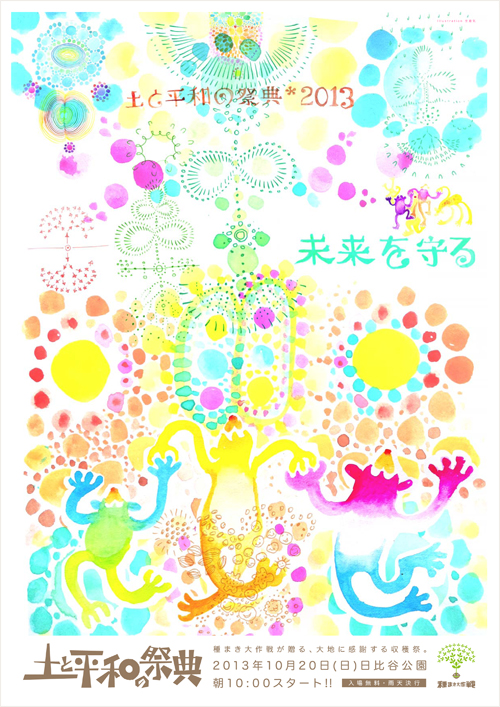"Earth Ship" by Mayumi Oda (Image: Safe Energy Handbook)
Longtime nuclear-free activist and visual artist Mayumi Oda shared her wisdom in "On Energy of Change, Feminization, and New Birth of Japan," a 2012 interview with Alice Miyagawa published at Kyoto Journal. A few excerpts:
You were interviewed previously for Kyoto Journal following the Tokaimura nuclear accident in the summer of 1999, when you lived in California. You said that you had come to Japan to help empower people, especially women, in response to the government’s negligence in handling the issue. Then, at the turn of the millennium, you moved from California to Hawai’i. That seems to have marked a turning point in your life...
Until 1999 I had really tried to focus my work to let people know the dangers of having nuclear [power plants] on earthquake faults. I couldn’t convince them. I already saw the possibilities of disaster. I thought it would be in Tokai, or Hamaoka, near Tokyo. I was terribly, terribly worried. I had worked nearly nine years in the antinuclear movement. I was very discouraged that Japan was not really responding to the danger.
I was just very tired, and I felt like I had to rebuild a new life. So I chose Hawai’i to do sustainable living, making a farm, to show people that there’s another way to live. I felt like somebody had to be doing this — not just thinking about the possibility, but practicing it. Hawai’i taught me to live with aloha, within an island. In 2000 I bought the farm [Ginger Hill Farm and Retreat, in Kealakekua, meaning the Path of God], and for eleven years I have worked on it. I have probably educated about two hundred young people, just to live hopefully sustainably through farming, through eating the right things, making medicines, cleansing, healing oneself with herbs and the things that we grow.
I just finished painting a six-panel screen of mostly women marching towards Amaterasu the Sun Goddess — I painted about forty women, with a few men. They are all practitioners of my Goddess Academy, marching from the life they lived, to a more nature-based life, symbolized by Amaterasu — marching from an oil-based economy towards a solar-based economy...
...I painted a Sotatsu screen of the Gods of Wind and Thunder turned into females to bring more of the feminine into culture, especially Japanese culture, which really needs more feminine. Traditional culture has it, but somehow this modern culture in Japan became so Westernized that we gave up a lot of that stuff.
... I felt almost like the women in Fukushima all feel, and so it’s a lot of force and a strength — I felt that these Goddesses can somehow break through something that we are so up against. That’s how I painted those two Goddesses, to bring an energy of change that our country needs at this moment...
These are all yamato-e style paintings, the tradition is extremely old-fashioned. It’s been going on 1,300 years in Nara so I kept that tradition...So I decided that I will focus on this old beautiful tradition that our ancestors used, and with that how can I express who we are now in this time.
In 1993 I did some hand-scrolls called Random Kindness and Senseless Acts of Beauty [for] a story that was written by Anne Herbert and Margaret Pavel, right after I became an anti-nuclear activist, so my message was very anti-nuclear, anti-war and anti-violence, and how to live with the peace of others in the land. That was the story behind it. Now it’s a nine-meter scroll.
...So I did this work for the younger generations that we just deprived because of our own luxury, our own wantings, our own electricity, our rich food, we really just left such a legacy to these young people. It feels to me this is an apology — I’m sorry that we did so badly. I’m dedicating this to the younger generations. When I think about it, it just makes me so sad. Our generation was so bad, especially men in my generation, [they] could not think about anybody — they were so caught up in the Japanese becoming so wealthy, so luxurious, they were just awful, awful, so wrong...
...The people who can really make a choice will win, get out and start a new life somewhere in the country, or in other cities. Especially if they have parents in the countryside, they should go back, and start a new life...


















